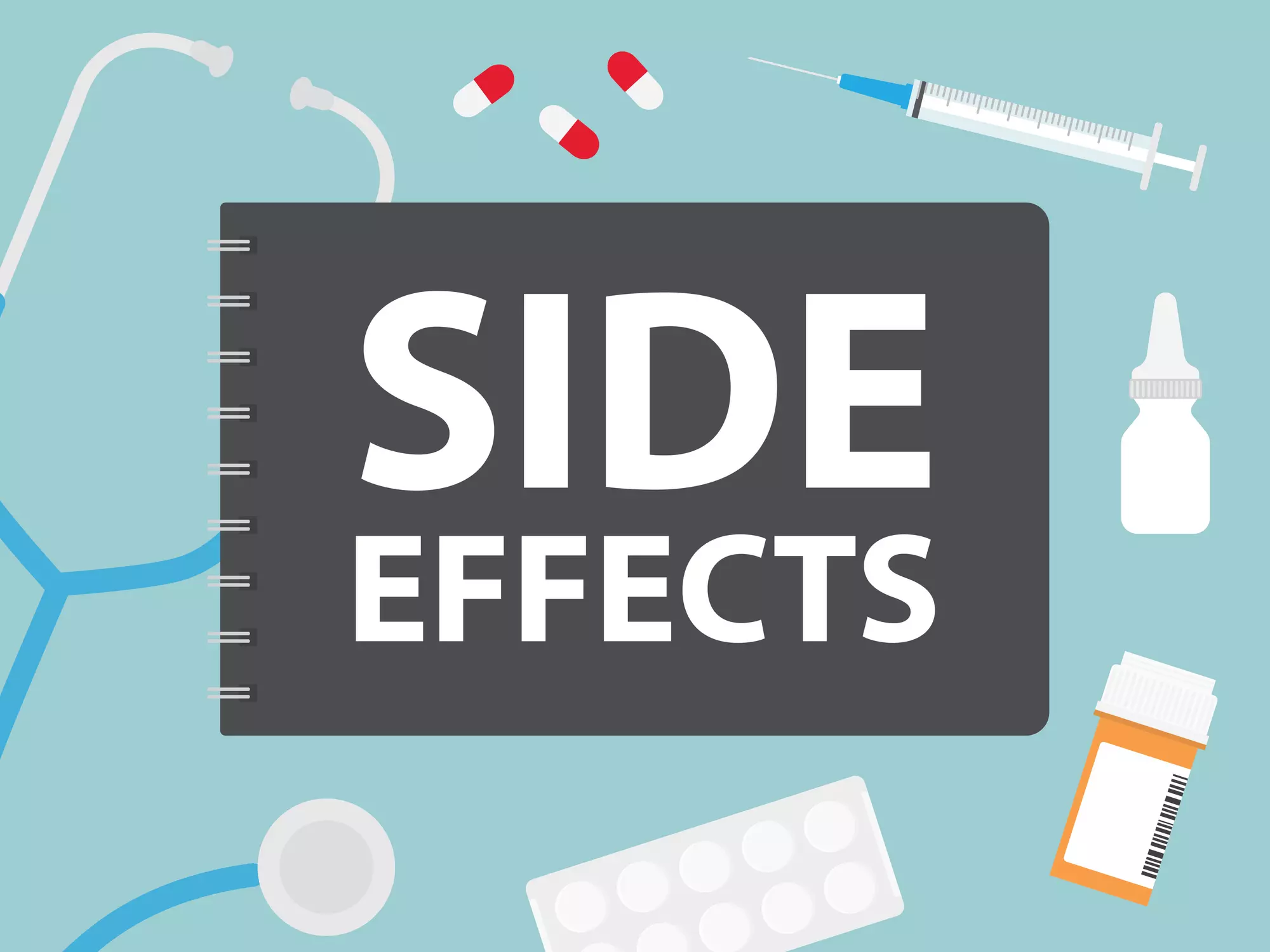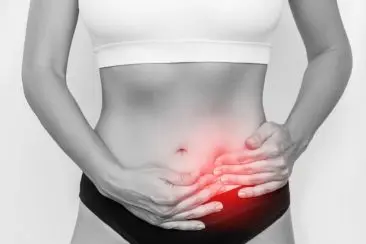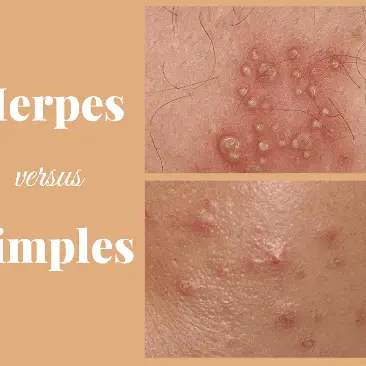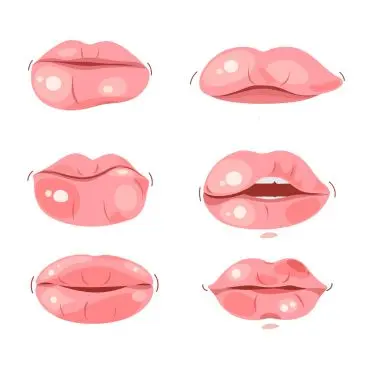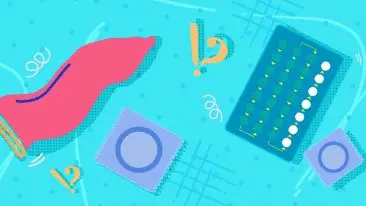Hidden Side Effects of TRT: What Patients Should Know
Testosterone replacement therapy (TRT) can cause side effects such as acne, sleep apnoea, fluid retention, thickened blood (polycythaemia), gynecomastia, and reduced fertility. While TRT offers benefits, it’s essential to understand these risks and monitor them with regular check-ups.
When most people think about testosterone replacement therapy, they imagine more energy, a stronger sex drive, and feeling more like themselves again. These are the benefits you often hear about in ads and online. TRT is usually shown as a way for men to feel younger and more confident, especially if their testosterone levels are low.
However, what people don't often discuss are the side effects that can accompany TRT. Some websites might mention issues like acne or trouble sleeping, but they rarely explain why these problems occur or how serious they can be. Because of that, a lot of men start TRT without knowing what to expect. They might be surprised by bad breakouts, loud snoring that turns into sleep apnoea, or even health issues like swollen ankles or thickened blood.
This blog aims to discuss the hidden side effects. We're not trying to scare anyone or say TRT is bad; many men get real help from it. However, it's also essential to understand the potential downsides, including acne, sleep disturbances, elevated red blood cell counts, and hormonal imbalances. These can be managed, but only if you know what to watch for.
If you're considering starting Testosterone replacement therapy or are already on it and noticing unusual changes, this guide is for you. When you know what to expect, you can ask better questions, make smarter choices, and take better care of your health.
Common TRT Side Effects and Their Causes
Before we talk about the side effects most people don’t hear about, let’s go over the ones that are more commonly known when it comes to testosterone replacement therapy.
Acne and Oily Skin
This is likely the most frequently discussed side effect. Testosterone can make your skin produce more oil. For some guys, that means a few pimples. For others, it can cause awful breakouts, especially on the back and shoulders. Some people act like it’s no big deal, but it can be uncomfortable and hurt your confidence.
TRT and Sleep Apnoea: What You Need to Know
You may have heard that TRT can disrupt your sleep. Some people start snoring more or even develop something called sleep apnoea, where their breathing stops and starts during sleep. This isn’t just annoying; it can be dangerous if left untreated. Still, it’s often not explained very well.
Swelling from Holding Too Much Water
TRT can cause your body to retain excess water. This can make your ankles, hands, or face look puffy or swollen. It may not seem serious at first, but if you also have high blood pressure or trouble breathing, it could be a warning sign of a more serious heart issue.
Thicker Blood from More Red Blood Cells
TRT can stimulate the production of more red blood cells. That sounds okay, but too many can make your blood thick, which can lead to blood clots or even a stroke. This is riskier for older men or people who already have health issues. Although doctors are supposed to check for this, it’s not always discussed clearly with patients.
TRT and Acne: Why It Happens and How to Manage It
Some people think acne from testosterone therapy is no big deal, just a few pimples like in high school. But that’s not always true. For many people, it can be a painful, long-lasting condition that is also difficult to treat. Let’s break down why this happens and what you can do about it.
Why Does TRT Cause Acne?
1. More Oil on the Skin
TRT makes your body produce more testosterone. This boosts oil production in your skin (called sebum), which can clog your pores and cause pimples.
2. A Stronger Hormone Called DHT
Some of the testosterone in your body turns into another hormone called DHT. This hormone attaches to skin cells, exacerbating acne by causing increased swelling and blocked pores.
3. Inflammation and Bacteria
Oily skin is an ideal environment for acne-causing bacteria to thrive. These bacteria release chemicals that cause the skin to become red, swollen, and covered in painful bumps.
What Do Studies Say?
Researchers have looked at groups of people taking testosterone (like transgender men on TRT) and found:
- Over half had ongoing acne.
- Some got moderate to severe breakouts.
- One study showed that 94% of people experienced acne on their face, and 88% had acne that did not clear easily.
This shows acne from TRT is very common and not always taken seriously by doctors.
Does the Type of TRT Make a Difference?
- Shots or pills: These can cause hormone levels to rise rapidly, potentially leading to increased acne.
- Creams or gels: These may cause less acne but can irritate the skin. Additionally, they can transfer to people you come into contact with.
- New treatments: Doctors are testing special creams, such as clascoterone, that help treat acne without interrupting testosterone replacement therapy.
How to Deal With TRT Acne
- See a dermatologist early: They may suggest face washes, creams (such as retinoids or benzoyl peroxide), or light antibiotics to help calm the skin.
- For severe cases, stronger treatments, such as isotretinoin (a powerful medication), may be necessary. But these should only be used with a doctor's help.
- Adjust your TRT: Sometimes, adjusting the dose or method of taking testosterone can help reduce acne.
TRT and Sleep Apnea: Risks, Symptoms, and Treatment
TRT can help with energy, mood, and sex drive, but one problem that people don't talk about enough is how it can mess with your sleep. Specifically, it can make a condition called obstructive sleep apnoea (OSA) worse or even cause it.
What the Research Shows
|
Study / Review |
Design & Population |
Key Findings |
|
J Clin Endocrinol Metab (2004) |
Randomised placebo-controlled, healthy men given high-dose TRT |
Significantly disrupted sleep: increased apnoea–hypopnoea index & desaturation events (academic.oup.com) |
|
National Review |
Observational cohorts |
16.5 % OSA incidence in TRT users vs 12.7 % in controls |
|
PubMed Central review (2023) |
Comprehensive review |
TRT contraindicated in untreated or severe OSA; high-dose short-term treatment worsens symptoms |
|
A clinical cohort of 474 men |
Chart review |
Polycythaemia patients on TRT had a 52 % OSA diagnosis rate; BMI was a strong risk factor. |
Why TRT Might Cause Sleep Apnoea
Here’s how testosterone may lead to or worsen sleep apnoea:
Changes in Throat Muscles
Testosterone can affect the muscles in your throat, making them more likely to collapse when you sleep. This can block your airway.
Breathing Control
TRT may disrupt the brain's control over breathing, making it harder to maintain a steady breathing rhythm while asleep.
Thicker Blood
TRT increases red blood cells, which makes blood thicker. This can lower the oxygen in your blood at night, especially if you already stop breathing during sleep.
Weight Gain or Body Changes
Testosterone can shift fat around or lead to weight gain, and both can raise the risk of sleep apnoea.
What Doctors Recommend
- Don’t start TRT if you already have bad sleep apnoea and aren’t treating it.
- Low doses or skin-based treatments (such as gels) may be safer for sleep.
- Doctors recommend getting a sleep study before starting TRT if you exhibit any signs of sleep disturbance.
What to Watch For and Do
Look out for:
- Loud snoring
- Feeling tired during the day
- Waking up with headaches
- Gasping or choking while sleeping
If you notice these:
- Talk to your doctor about a sleep study.
- If sleep apnoea is diagnosed, CPAP machines (which help keep airways open) can be beneficial.
- You may also need to check your blood regularly, adjust your testosterone replacement therapy (TRT) dose, or donate blood to lower your red cell levels.
Why This Matters
Sleep apnoea is severe. If not treated, it can lead to high blood pressure, heart problems, stroke, and feeling awful every day. Since TRT can raise the risk of sleep apnoea and make it worse, it’s super important not to ignore any sleep problems you start having.
Cardiovascular and Blood Risks of TRT
TRT (Testosterone Replacement Therapy) can make people feel more energetic and improve their bodily functions, but some of the side effects may not be immediately noticeable. These "quiet" problems can impact your blood, heart, and overall health if you're not vigilant.
1. Too Many Red Blood Cells (Polycythaemia)
TRT can cause your body to produce an excessive number of red blood cells. This condition is called polycythaemia.
- Men on TRT are over 3 times more likely to develop this problem compared to men who don’t use TRT.
- Too many red blood cells make your blood thicker, which increases the risk of blood clots, heart attacks, or strokes.
- One big study found a 35% higher chance of severe heart problems in men who got polycythaemia after starting TRT.
What to Look For in Blood Tests:
|
Haematocrit (HCT) Level |
What It Means |
|
Before TRT |
Used as a starting point |
|
52% – 54% |
A warning sign—talk to your doctor |
|
Over 54% with symptoms |
TRT may need to stop; blood might need to be removed through a process called “phlebotomy” |
2. Swelling from Holding Too Much Water (Fluid Retention)
TRT can also make your body hold on to extra water, which can cause swelling in places like your:
- Ankles
- Feet
- Hands
- Face
You may also experience bloating or shortness of breath. Sometimes, this is a warning sign that your heart is under stress, especially if you already have heart problems.
3. Heart and Blood Pressure Changes
Doctors are still learning about how testosterone replacement therapy affects the heart. Here’s what they know:
- One big study showed no significant increase in heart attacks when TRT was used carefully in people with heart risks.
- However, TRT can raise red blood cell levels, which increases the risk of clots and other cardiovascular issues.
- In rare cases, older men on high doses of TRT have had irregular heartbeats (called atrial fibrillation).
- The FDA now warns that TRT might raise blood pressure, even if the risk of heart attacks isn’t proven.
4. How to Stay Safe on TRT
To keep TRT safe, doctors recommend:
- Check blood levels before starting, again at 3 and 6 months, and then annually.
- If the red blood cell count (HCT) exceeds 54% or causes symptoms, pause TRT, consider reducing the dose, or consider donating blood.
- Watch your blood pressure, especially if you use testosterone injections.
- Look for swelling in your legs, face, or hands. If it sticks around, get your heart checked.
- If you feel your heart flutter or have uneven beats, tell your doctor—this could mean atrial fibrillation.
Key TRT Side Effects and How to Manage Them
| Side effect | Why it happens | What to do |
|---|---|---|
| Acne/oily skin | ↑ Androgens/DHT increase sebum | Topicals (retinoids/BPO), dose/formulation tweak, derm referral |
| Sleep apnea | Upper airway tone & ventilatory control changes | Sleep study, CPAP, weight management, review dosing |
| Polycythaemia | ↑ Erythropoiesis raises HCT/Hb | Monitor HCT; reduce dose, switch form, consider phlebotomy |
| Fluid retention | Renal sodium/water retention | Monitor BP/edema; salt moderation; dose adjust |
| Gynecomastia | Aromatisation → ↑ oestrogen | Dose review, consider AI under supervision |
| Fertility suppression | LH/FSH suppression | Consider hCG/SERM co-therapy; sperm banking |
TRT Risks for Fertility, Gynecomastia, and Gel Transfer
Testosterone Replacement Therapy doesn’t only raise your testosterone levels—it also causes other changes in your body. Like a row of dominoes, one hormone change leads to another. Here are three essential effects you should know about:
1. Fertility: TRT Can Make It Harder to Have Children
When you take testosterone, your body thinks it doesn’t need to make its own anymore. This shuts down necessary signals (called LH and FSH) that help your body make sperm.
What studies found:
- About 65% of men who took testosterone shots had zero sperm after 4 months.
- Most got their sperm back after stopping TRT, but about 16% didn’t recover within 6 months.
- People who used gels or creams took approximately 7 months to recover, compared to 3 months for those who used shots.
If you wish to have children, consult your doctor. You may want to freeze your sperm or look into other treatments that don’t stop sperm production.
2. Gynecomastia: Breast Growth in Men
Sometimes, testosterone in the body is converted into another hormone called oestrogen (a hormone more commonly found in women). Too much oestrogen can cause breast growth in men, known as gynecomastia.
What to look for:
- A sore lump under the nipple
- Swelling or a breast-like appearance in the chest
If this happens, your doctor might lower your dose, give you medicine to block oestrogen, or talk about surgery if it doesn’t go away.
3. Topical TRT Can Rub Off on Others
If you use testosterone gel or cream, some of it can rub off on people you touch, like your partner or kids, before it dries.
What can happen:
- Women may experience facial hair growth, acne, a deeper voice, or irregular periods.
- Children may grow pubic hair too early, get larger genitals, act more aggressively, or break out in acne.
To keep others safe:
- Wash your hands after putting on the gel
- Let the gel dry completely before touching anyone
- Cover the area with clothes after applying it
- Wash the skin if someone touches the area by mistake
What You Should Do
- Planning to have kids? Freeze your sperm or ask your doctor about safer treatments like HCG.
- Noticing breast changes? Tell your doctor early.
- Using gels? Follow safety steps and ask about injections or nasal sprays that are not transferable to others.
Comparing TRT Formulations: Pros, Cons, and Side Effects
Not all testosterone treatments work the same way. The type of TRT you choose, like shots, gels, or patches, can make a big difference in how you feel and what side effects you might get.
Picking the right one can help you avoid problems like bad acne, heart issues, or accidentally passing hormones to your family.
TRT Formulation Comparison Table
|
Type |
Good Things |
Things to Watch Out For |
Side Effects |
|
Injections (shots) |
Cheap, lasts a long time |
Hormone levels go up and down; you may need help giving the shot |
Acne, mood changes, thick blood |
|
Gel or Cream (on skin) |
Easy to use every day; steady levels |
Can rub off on others and may irritate the skin |
Acne can affect kids or partners |
|
Skin Patch |
Absorbs slowly and steadily |
Can cause rashes or fall off |
Mild acne, itchy skin |
|
Nasal Gel (like Natesto®) |
No risk of transfer; it is quick to use |
Have to use it a few times a day; it may bother your nose |
Fewer skin issues, less risk of thick blood |
|
Pellets (implanted under the skin) |
Lasts 3–6 months without doing anything |
Minor surgery to put in; can’t change dose easily |
Hard to fix the side effects once it’s in |
Why Your Choice Matters
- Break out with acne a lot? Avoid strong injections or gels; nasal options may be a better choice.
- Live with kids or a partner? Gels can rub off on them. Try something that doesn’t transfer.
- Worried about thick blood? Injections can raise your red blood cell levels too high, so nasal gel or pellets may be a safer option.
Monitoring TRT: Blood Tests and Red Flag Symptoms
Testosterone Replacement Therapy isn’t something you can start and forget about. It affects many aspects of your body, including your blood, heart, hormones, and even your sleep. That’s why regular checkups and self-monitoring are super important.
Tests to Get Before You Start TRT
These tests help doctors make sure TRT is safe and needed:
|
Test |
Why It Matters |
|
Total & Free Testosterone |
Checks if your testosterone is low |
|
Haematocrit & Haemoglobin |
Checks for thick blood, which can be risky |
|
PSA (Prostate Test) |
Look for prostate problems |
|
Liver Function Test |
Make sure your liver can handle TRT |
|
Cholesterol Test (Lipid Panel) |
Checks heart health risks |
|
Sleep Study (if needed) |
Find out if you have sleep apnoea |
|
Sperm Test (if you want kids) |
Check sperm health before starting TRT |
Tests to Keep Doing While on TRT
|
How Often |
What to Check |
Why |
|
Every 3 months (1st year) |
Blood count, testosterone, PSA, blood pressure |
Side effects usually show up early |
|
Every 6 months after that |
Same tests |
Helps catch problems before they get worse |
|
Once a year |
Cholesterol, liver health, and sleep check |
Keeps long-term risks in check |
How to Keep Track of Yourself
- Write it down: Keep a journal of how you’re feeling, your mood, energy, sleep, acne, and more.
- Look in the mirror: Watch for swelling, chest tenderness, or skin changes.
- Ask your partner: They may notice things like snoring or mood swings before you do.
Know When to Talk to Your Doctor Again
Let your doctor know right away if you:
- Have red blood cell counts (haematocrit) over 54%
- Snore more or stop breathing during sleep
- Get terrible acne or chest changes (like breast growth)
- See changes in your PSA or start having trouble peeing
- Want to have kids and need to protect your sperm
Benefits vs Risks of TRT: Making an Informed Choice
Testosterone replacement therapy can change lives in a significant way when it’s done right. It can give you more energy, help with focus, improve your mood, and even bring your sex drive and strength back.
But like anything powerful, it has two sides: the helpful and the risky.
Benefits of TRT
- More energy and motivation
- Better sex drive and performance
- Stronger muscles and more muscle mass
- Happier mood and clearer thinking
Risks People Don’t Talk About Enough
- Bad acne that doesn’t go away
- Snoring or sleep apnoea that gets worse
- Thickened blood, which can lead to clots
- Trouble making sperm (lower fertility)
- Breast growth in men (called gynecomastia)
- Risk of passing testosterone to others if using gel
How to Make a Smart Choice About TRT
You don’t have to be scared of TRT, but you should be smart about it. That means:
- Picking the type of TRT (gel, shot, etc.) that fits your life and health.
- Get regular blood tests and check in with your doctor.
- Talking honestly about any side effects, even if they’re uncomfortable.
- Changing or pausing treatment if your body isn’t reacting well.
Final Thoughts on TRT Side Effects and Safety
Testosterone replacement therapy, or TRT, can help men who have low testosterone. It can bring back your energy, make you feel happier, help you get stronger, and help you feel like yourself again. However, some side effects are not often discussed. These can include acne, difficulty sleeping, thicker blood, issues with fertility, and changes in hormone levels. These side effects are not uncommon; they are often overlooked in conversations.
That's why it's crucial to stay vigilant, familiarise yourself with what to expect, and undergo regular check-ups. TRT is powerful, and it needs to be overseen.
If you're considering starting TRT, or you're already on it, don't just think about the benefits. Ask questions, pay attention to changes in your body, and work with doctors who understand how hormone therapy works. That's where Mobi Doctor can help.
Mobi Doctor is a safe and fast online service that works across the European Union. You can talk to qualified doctors without leaving home. They can help you obtain tests, answer your questions, and create a personalised treatment plan tailored to your needs. Whether you're just learning about TRT or already using it and need help with side effects, Mobi Doctor gives you expert medical advice without the long wait.
